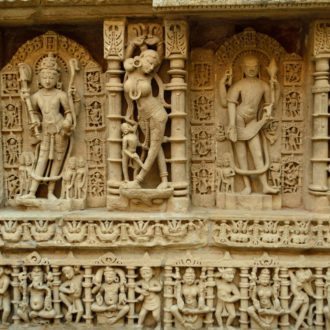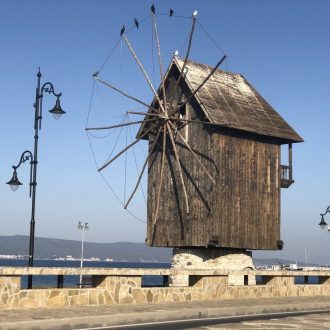A visit to Warangal Fort and Ramappa Temple
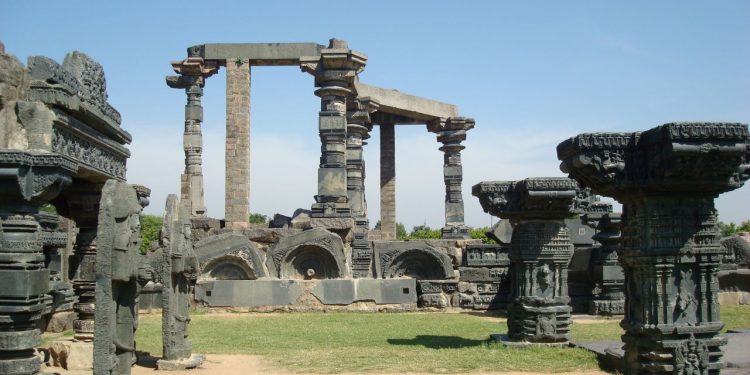
The Pesarattu Dosai arrived piping hot on my table. It was golden brown in colour, garnished with onions, and was laced with a variety of chutneys. The waiter beamed as he served us with a bit of a flourish. We reached out to dip in the sambar and bite into the red hot chillies and lost ourselves in the spicy flavours that our taste buds discovered. For a moment, we forgot the crowd around us , the clutter of vessels, and the loud voices. We were in a nondescript but hygienic hotel in Warangal town and on a road to Warangal Fort or Warangal Kota as its called and Ramappa Temple
I finally took my eyes off my plate and glanced around me. The large garish photo prints loomed large on the walls. They screamed to get the tourist’s attention but looked rather kitsch. A giant Nandi stared right into my eyes while another monument layered with several pillars stood out in a landscaped garden. It looked nothing like the photographs that had initially lured me here. We had decided on Warangal Kota on an impulse. It all started with some black and white photographs that I had seen in an old magazine. There were sculptures strewn all around and enclosing them were massive stone pillars.
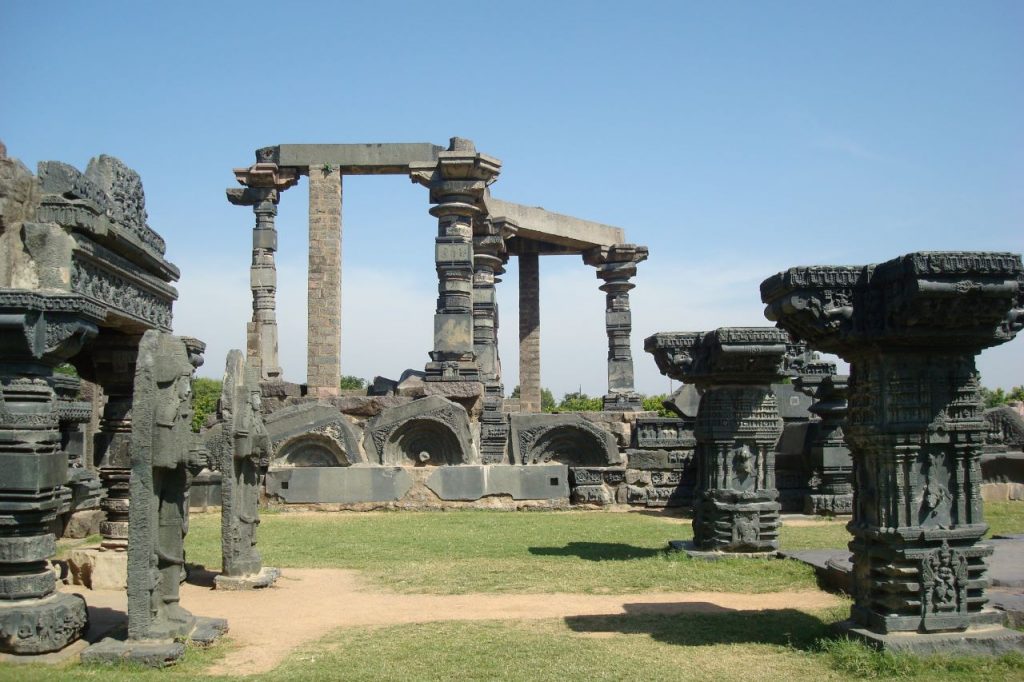
A footnote told us that it is the 12th century Warangal Fort or Warangal Kota built by the Kakatiya Dynasty. The stone pillars were more than 30 feet high and they symbolised “gateways of glory “ called Kirti Thoranas. The scattered sculptures lay in the centre opened to the skies. A Shiva temple was surrounded by ornate pillars, shorter than the Kirti Toranas. These tall gateways of glory beckoned me to visit Warangal Kota which was the seat of the Kakatiyas.
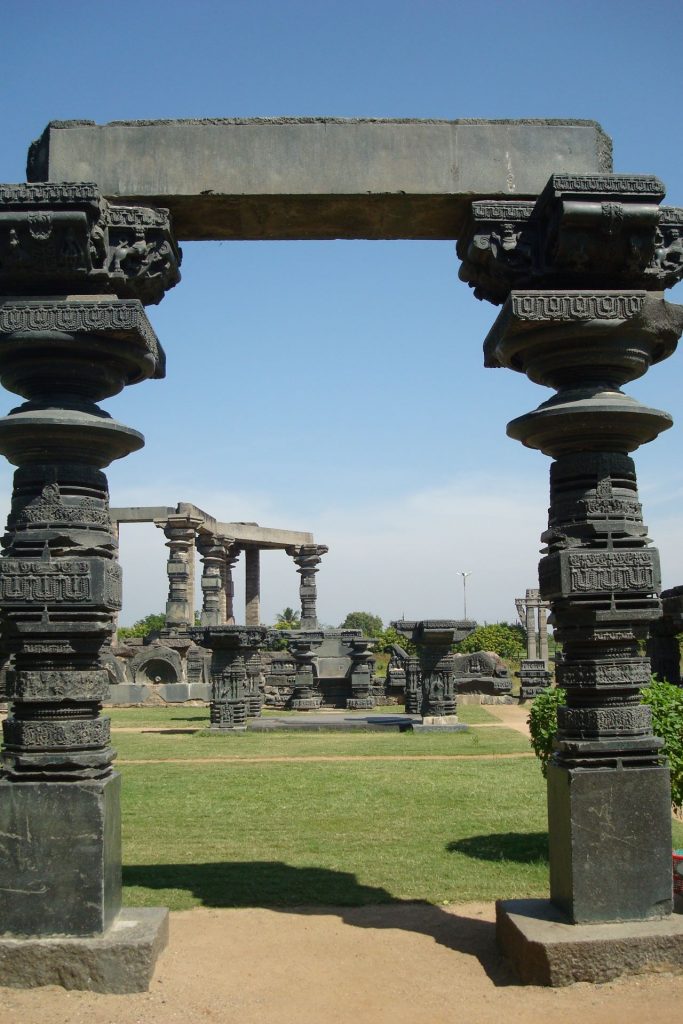
Our journey from Hyderabad took us through rustic landscapes. At every glance, every village seemed to clone the other. For any traveller, it was easy to dismiss the dusty hamlet that one crossed on the way as just another village. However, a lost temple or the broken remains of a fort told a different story. We discovered several such villages en-route to Warangal Fort which had its own tale.
The fort of Bhongir for instance which we discovered atop a hill was once the famous 10th-century Bhuvanagiri fort of the Western Chalukyas. A simple village, Kolanpuka was a capital town of the same dynasty and it housed a renovated 2000-year-old Jain temple, shimmering in marble. We drove on , crossing a bus of enthusiastic school children on an excursion and stopped by at the cave temple, Yadavagirigutta . We met a few artisans at Pembarti village who showed us their brassware. Myths from the Ramayana flew past us as we crossed Jalgaon where Lord Rama had apparently killed Maricha, who was in the form of a deer.
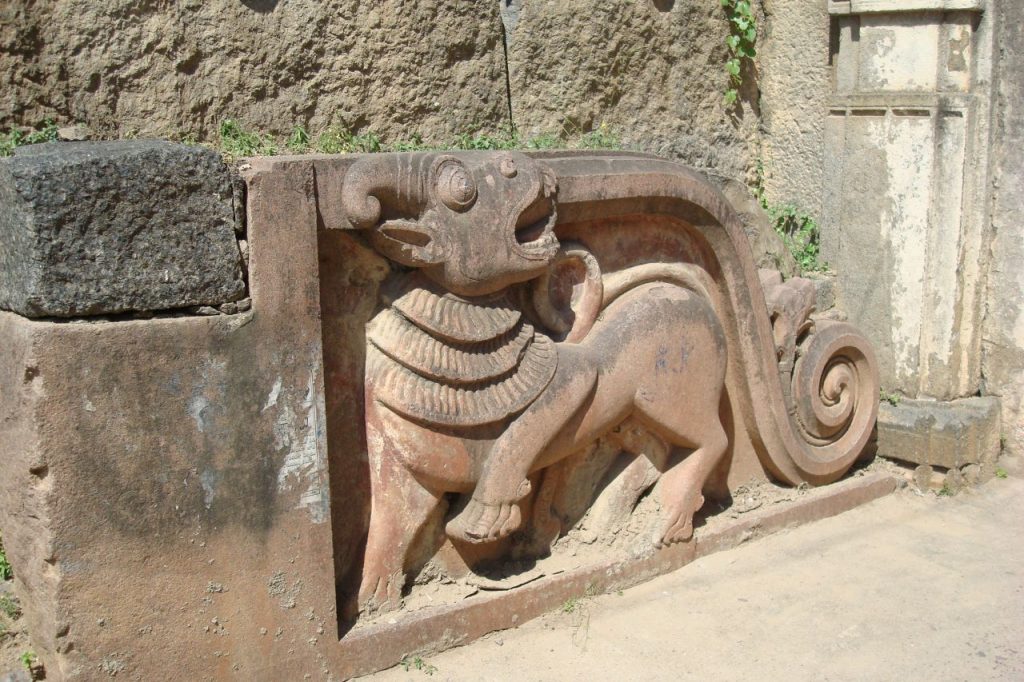
Is Hanmakonda and Warangal the same ?
”It is like Hyderabad and Secundrabad,” said my driver, Salim interrupting my reverie as we entered Hanamkonda or Hanmakonda. Warangal is considered to be its twin town and was just under 10 km away. My guide book said that Hanamkonda was the former capital of the Kakatiyas and it was later shifted to Warangal. The towns however cloned each other as we passed crowded markets and dusty neighbourhoods. Hoardings screamed for attention, but I hardly saw any heritage monument. Huge sacks of onions and potatoes were being piled up in the open markets. It was nowhere close to the idyllic historic town that I had painted in my mind.
The Kakatiyas were ancient rulers of present-day Telangana and Andhra Pradesh and it is probable that their early reign also had the advent of Buddhism in the region. Some historians refer to the period somewhere in the middle of the 7th century. Hieun Tsang or Xuanzang, the Chinese pilgrim has referred to the kingdom of Danakaktiya. Even Marco Polo mentions Warangal much later in his travels . The dynasty’s name comes either from its association with a town known as Kakatipura or from their worship of the goddess, Kakati. It is assumed that Kakatipura is present-day’s Warangal.
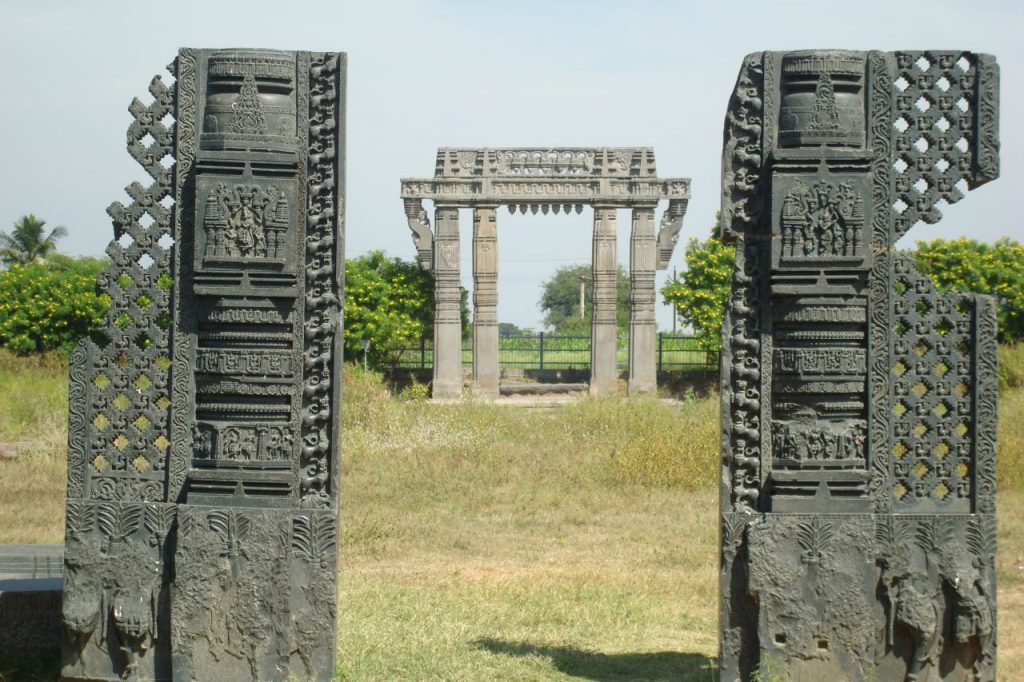
Salim stopped outside a university and showed a replica of the Kirti Toranas or the gateways of glory. There was history at the end of every street. Salim paused again in front of a lane that and we followed him. The narrow congested lane led to the thousand pillar temple built in the 12th century. We spoke to a local who said that a well was discovered here earlier and it was believed that the temple may have been built on water and it took more than 70 years to build.
The ASI board gave us more information. The temple built by Rudra Deva 1 in the 12th century was dedicated to Shiva, Vishnu and Surya. The pillars graced the mandapa and between the main shrine and the mandapa was a pavilion for a massive Nandi. The priest explained, “The Kakatiyas wanted the first rays of the sun to fall on the Linga, so while this shrine faced East, the others faced South and West. The Nandi was on the other side and looked towards the East as well. This temple was being renovated as well and hence photography was not possible to a large extent.
We were back on the road to Warangal Kila and Salim stopped again, this time at the Bhadra kali temple, located on a small hillock. It was believed to have been the patron goddess of the dynasty. The Goddess here was worshipped by the Pulakesin-II of the Chalukya Dynasty in the 7th century and was later patronised by the Kakatiyas.
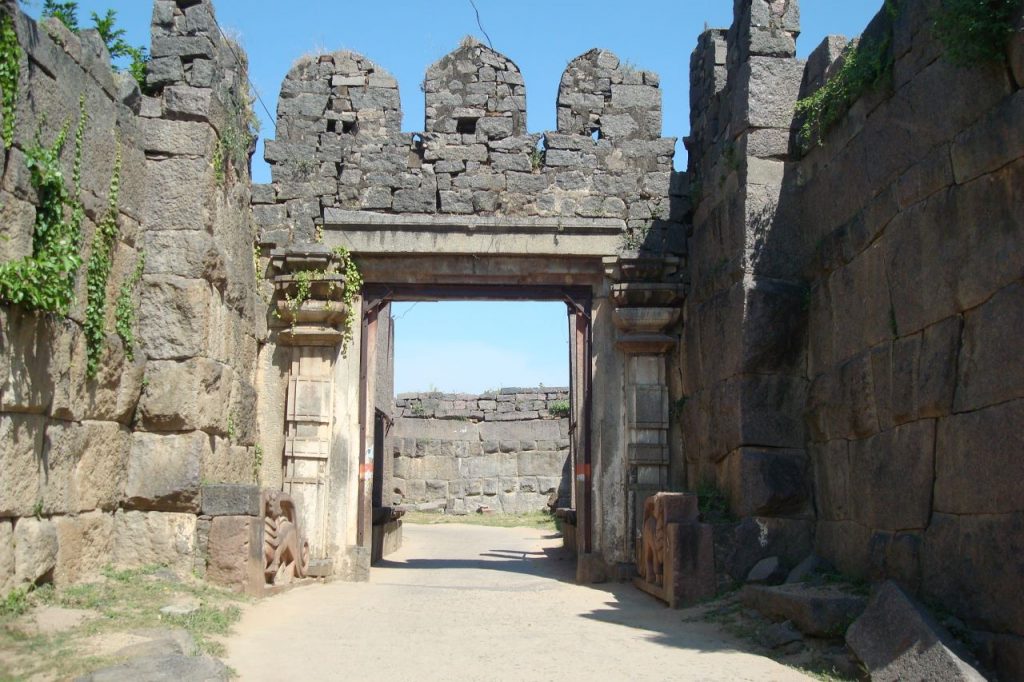
We followed the road along its curves until it led to a fortified stone wall which took us in a completely different world. The arches were embellished with sculptures and yalis carved in stone. We were inside the old Warangal Fort. I had no idea that an entire settlement actually lived here. As we walked inside the old fort, I realized that we were the only visitors.
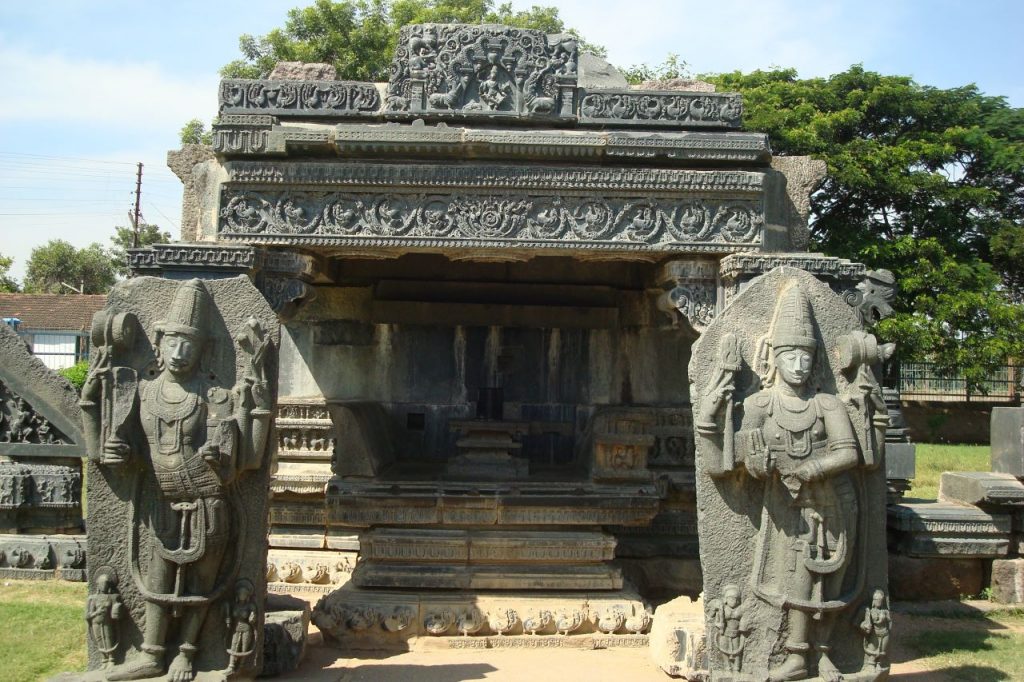

The four Kirti Toranas guarded a Shiva temple. A couple of elephants, another Nandi ,yalis, a few pillars, broken sculptures, a Gaja Kesari, and even an old throne lay enclosed by the Kirti Toranas , opened to the sky. The temple here is said to be the “Swayambhu “(meaning self incarnated ) and was worshipped by the famous Kakatiya Ruler ‘Prataparudra’ . We sat near the throne and looked around us. A couple of dogs chased each other.
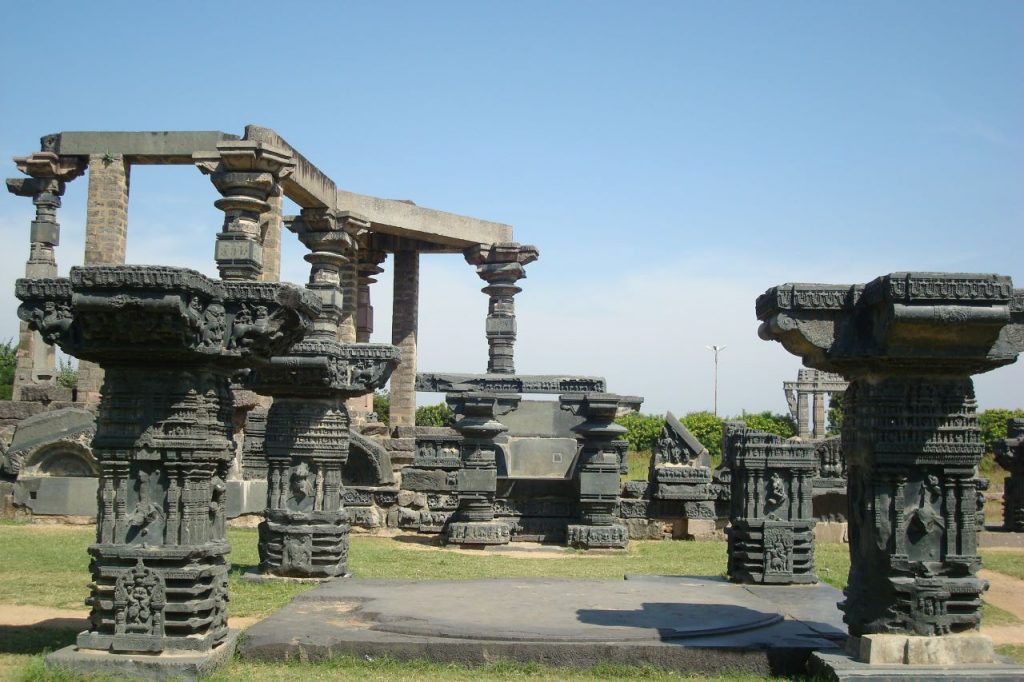
How did Warangal get its name ?
I walked over to the map and read a bit of history about how Warangal got its name. “This is Warangal, earlier known as Orugallu or Orukal, referring to the one single boulder or hillock where the fort is located. It is also called Ekasilanagaram.” The map said that the fort was built in the 12th century by Prola Raja and his son Rudra Deva, but it was ruled by Ganapathideva. The most important ruler of the Kakatiyas however was not a king, but queen Rudramma Devi who ruled from here.
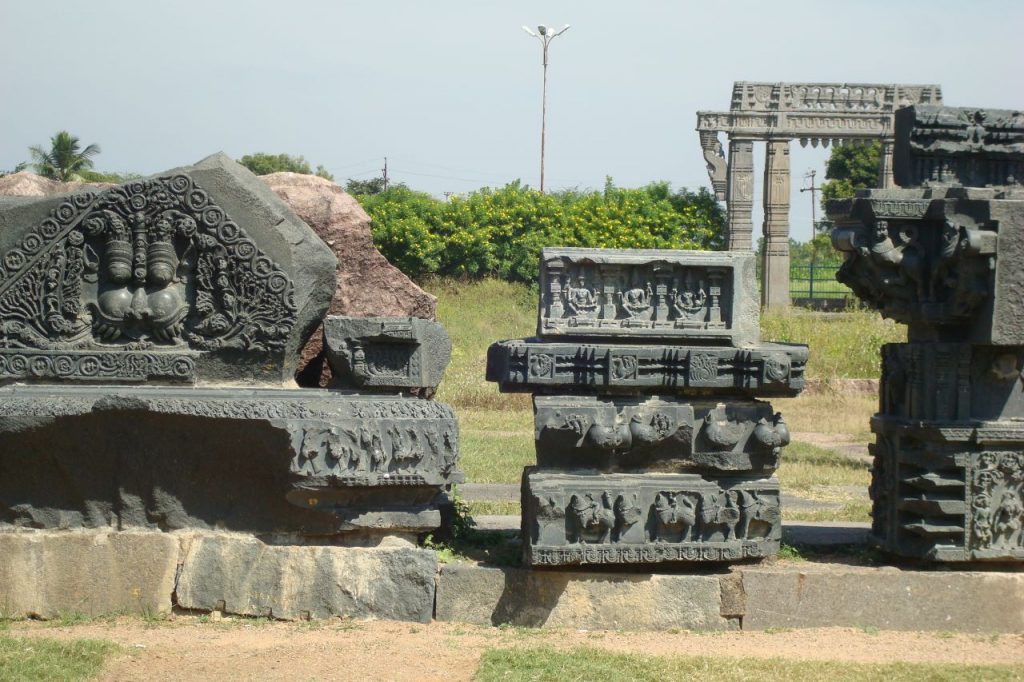
Warangal Fort or Warangal Kota
The Warangal fort had three concentric fortifications and was enclosed by two layers of walls and there was a trace of the third. Four gates faced the cardinal directions and the east and west gates are still in good condition. With 45 towers and pillars spread over a radius of 19 kms , there was also a moat surrounding the fort. The fort was however in ruins and was apparently destroyed by Malik Kafur as the dynasty fell eventually to the Delhi Sultanate
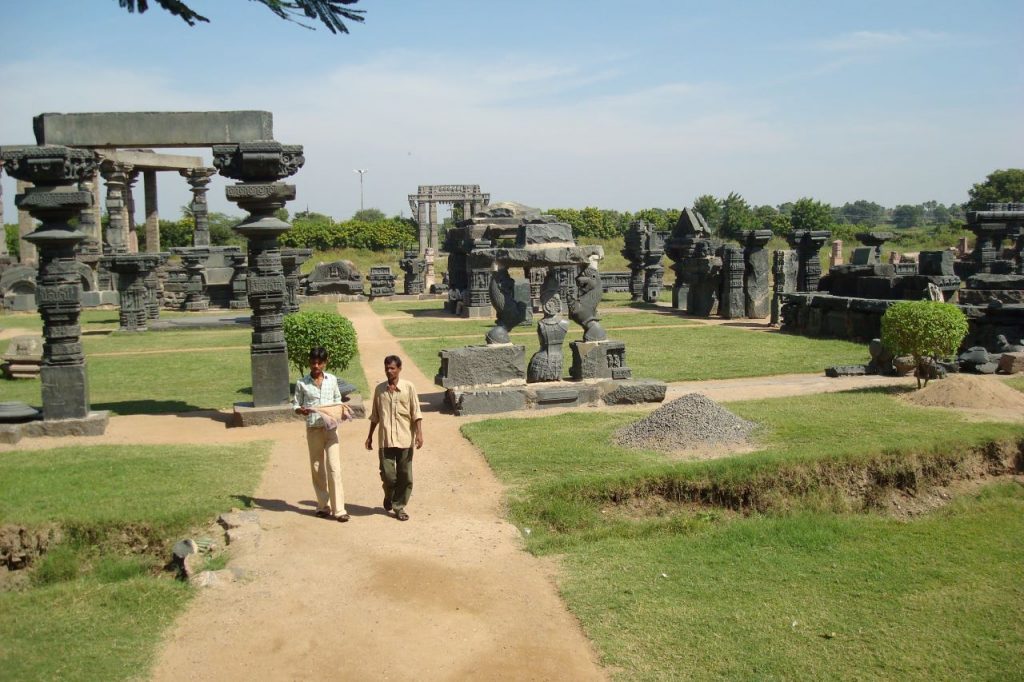
The silence in the Warangal Kota or fort was soothing as we spent some time marvelling at the sculptures. We could see the Khush Mahal built much later in the 15th century by a local ruler, Shitab Khan, possibly a subordinate of the Bahmani kingdom. It stood out in complete contrast from the architecture of the fort. We climbed the roof top and took in the sights of the old village. A couple of vehicles drove past us as school kids walked in gay abandon. The fields were lush and swaying in the breeze. It was amazing how a rich capital, a seat of power where battles were fought and won, was today a town of forgotten memories, alive only in textbooks. The Kirti Toranas remained in our minds – pillars of yesteryear’s glory lost to modern civilisation.
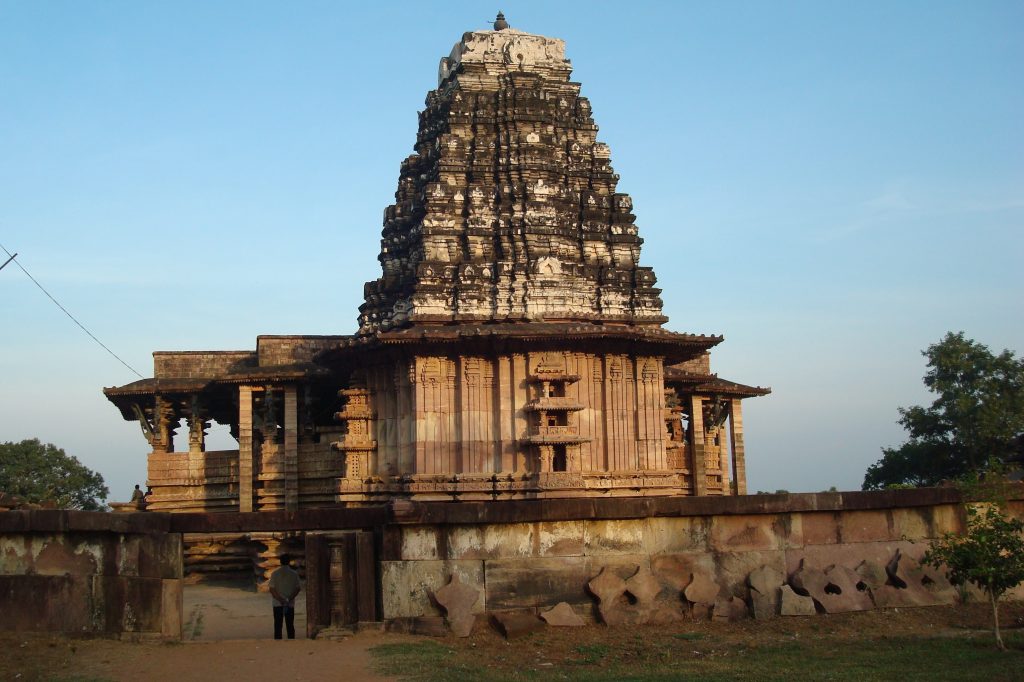
What is the speciality of Ramappa Temple ?
We carried on our journey from Warangal Kota to Palampet where the beautiful Ramappa lake was flowing adjoining the 13th century Ramappa temple. The Ramappa Temple Warangal also called the Kakatiya Rudreshwara Temple is now a UNESCO World Heritage Site . It was almost sunset when we reached Palampet and the lake, built by the Kakatiyas was known as Ramappa Cheruvu and was soaked in pink and purple hues of sunset. The Shiva temple is a walled complex and it was built with sandstone. It took over 40 years to build and an inscription mentioned the name of Kakatiya General Recharla Rudra. The temple was believed to have been built during the reign of the rulers Rudradeva and Ganapathi Deva. However the name Ramappa which is attributed to the temple is the name of the craftsman who built the temple.
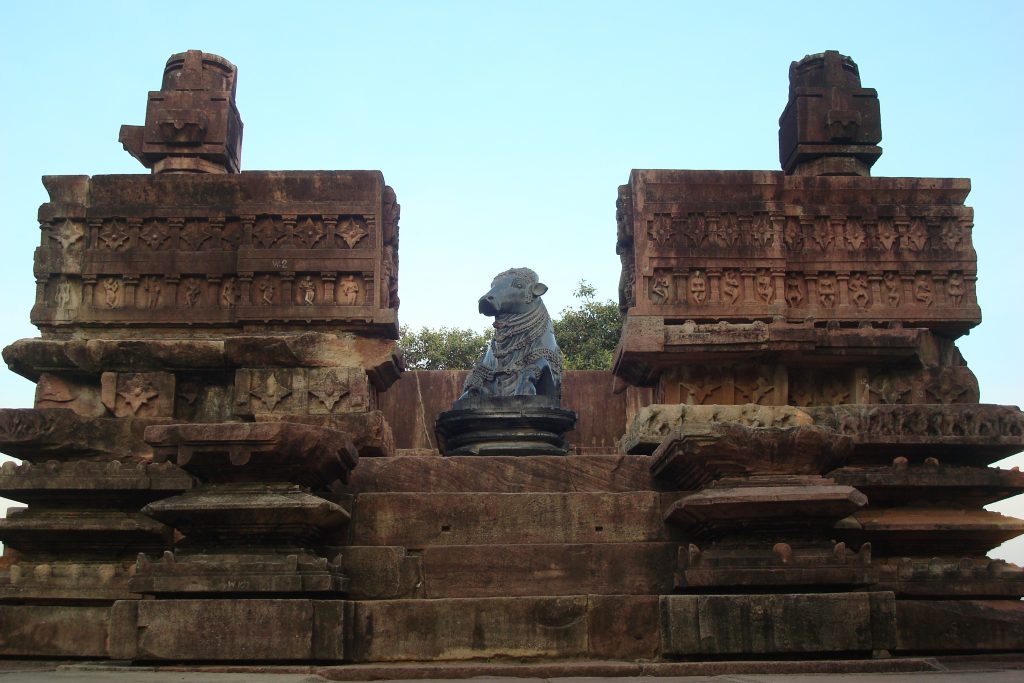
The Ramappa temple was being restored when I visited and like all ASI monuments, the sunset was the witching hour. However one of the officials who was supervising the work mentioned that the ceiling had lightweight porous bricks referred to as “floating bricks.” The pillars and the beams were decorated with magnificent sculptures, mainly dancers and musicians, and these were considered trademarks of the Kakatiya style of craftsmanship. I wish I had more time there but it has been over a decade (went in 2008) since I went there and hopefully I can plan a trip again once travel unlocks in these regions after the pandemic.
Where is Warangal ?
Warangal Fort or Kila Warangal is in Telangana and is 140 km from Hyderabad and Palampet where the Ramappa temple stands is another 66 kms from Warangal. There are many hotels to stay in Warangal and you can plan your trip for at least three days, keeping in mind the many places to see in and around Warangal. However I will do a separate post on some of these little obscure destinations which are a treasure trove of stories.

